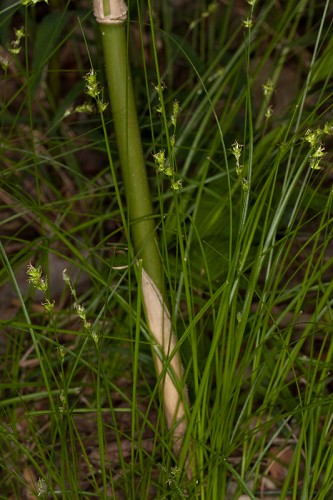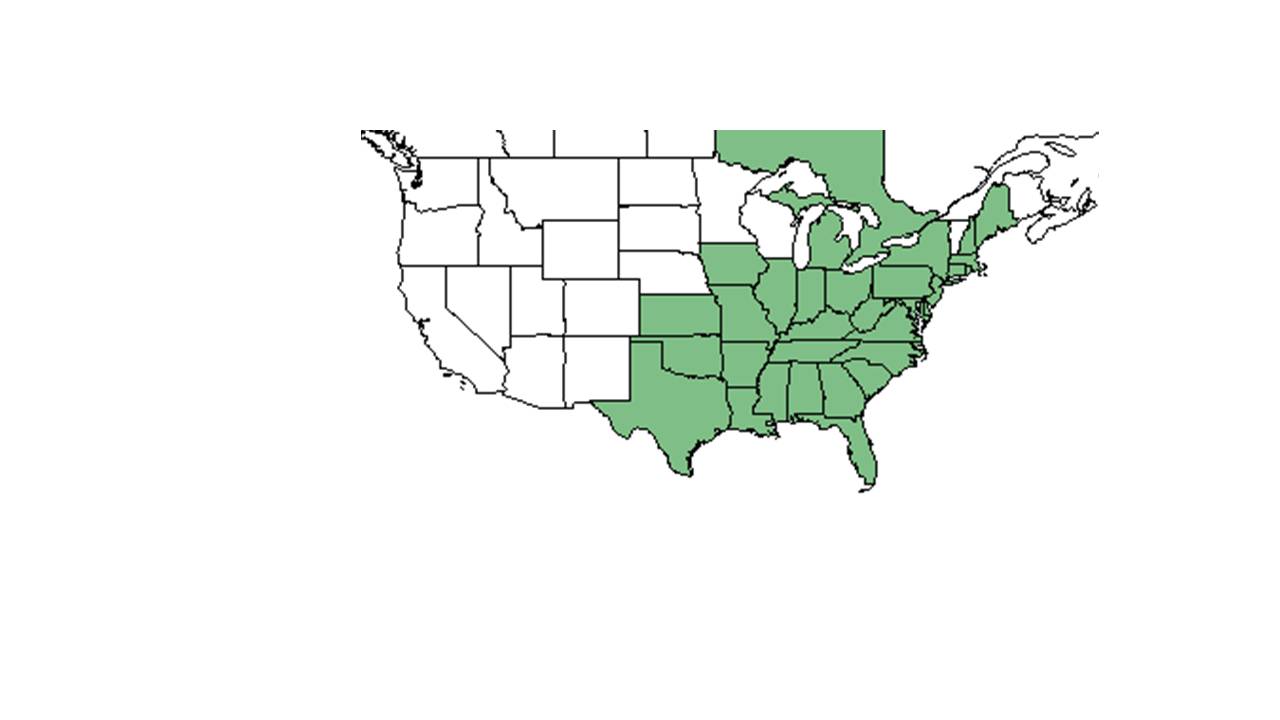Difference between revisions of "Carex retroflexa"
KatieMccoy (talk | contribs) (→Distribution) |
KatieMccoy (talk | contribs) (→Description) |
||
| Line 24: | Line 24: | ||
==Description== | ==Description== | ||
<!-- Basic life history facts such as annual/perrenial, monoecious/dioecious, root morphology, seed type, etc. --> | <!-- Basic life history facts such as annual/perrenial, monoecious/dioecious, root morphology, seed type, etc. --> | ||
| − | A description of ''Carex retroflexa'' is provided in [http://efloras.org/florataxon.aspx?flora_id=1&taxon_id=242357430 The Flora of North America]. | + | A description of ''Carex retroflexa'' is provided in [http://efloras.org/florataxon.aspx?flora_id=1&taxon_id=242357430 The Flora of North America]. This species is similar to ''C. texensis'', but can be told apart by having an perigynium wider than 1.3 mm and a spongy layer more than 1.1 mm<ref name="robert"/>. |
==Distribution== | ==Distribution== | ||
Revision as of 15:37, 12 April 2016
| Carex retroflexa | |
|---|---|

| |
| Photo by John R. Gwaltney, Southeastern Flora.com | |
| Scientific classification | |
| Kingdom: | Plantae |
| Division: | Magnoliophyta - Flowering plants |
| Class: | Liliopsida – Monocotyledons |
| Order: | Cyperales |
| Family: | Cyperaceae |
| Genus: | Carex |
| Species: | C. retroflexa |
| Binomial name | |
| Carex retroflexa Muhl. ex Willd. | |

| |
| Natural range of Carex retroflexa from USDA NRCS Plants Database. | |
Common name: reflexed sedge
Contents
Taxonomic notes
Synonyms: Carex retroflexa var. retroflexa; C. retroflexa Muhlenberg ex Willdenow, var. texensis (Torrey ex L. H. Bailey) Fernald
Description
A description of Carex retroflexa is provided in The Flora of North America. This species is similar to C. texensis, but can be told apart by having an perigynium wider than 1.3 mm and a spongy layer more than 1.1 mm[1].
Distribution
Ranges from Texas to Kansas to Iowa, east to Indiana and Michigan, north to Quebec and Maine and south to the gulf coast states[1].
Ecology
Habitat
This species has been found along rivers in rich deciduous woods and in floodplains surrounded by wet sphagnum moss. It has also been observed growing alongside trails at the edge of woodlands. It does well in partial to deep shade environments in drying sandy loam of floodplains[2].
Associated species include Carex albolutescens, Carex atlantica, Carex complanata, Carex lurida, Carex venusta. C. capillacea and sphagnum species[2].
Phenology
This species has been observed flowering in May and fruiting from March to May[2].
Conservation and Management
Cultivation and restoration
Photo Gallery
References and notes
Florida State University Robert K. Godfrey Herbarium database. URL: http://herbarium.bio.fsu.edu. Last accessed: June 2014. Collectors: L. C. Anderson, L. W. Curtis, and R. K. Godfrey. States and Counties: Alabama: Wilcox. Florida: Gadsden and Hernando.
- ↑ 1.0 1.1 Robert, G. D. and E. H. Philip (2003). "Recommendations concerning the Identification of Carex retroflexa and Carex texensis (Cyperaceae; Section Phaestoglochin Dumort)." Castanea 68(3): 245-253.
- ↑ 2.0 2.1 2.2 Florida State University Robert K. Godfrey Herbarium database. URL: http://herbarium.bio.fsu.edu. Last accessed: June 2014. Collectors: L. C. Anderson, L. W. Curtis, and R. K. Godfrey. States and Counties: Alabama: Wilcox. Florida: Gadsden and Hernando.